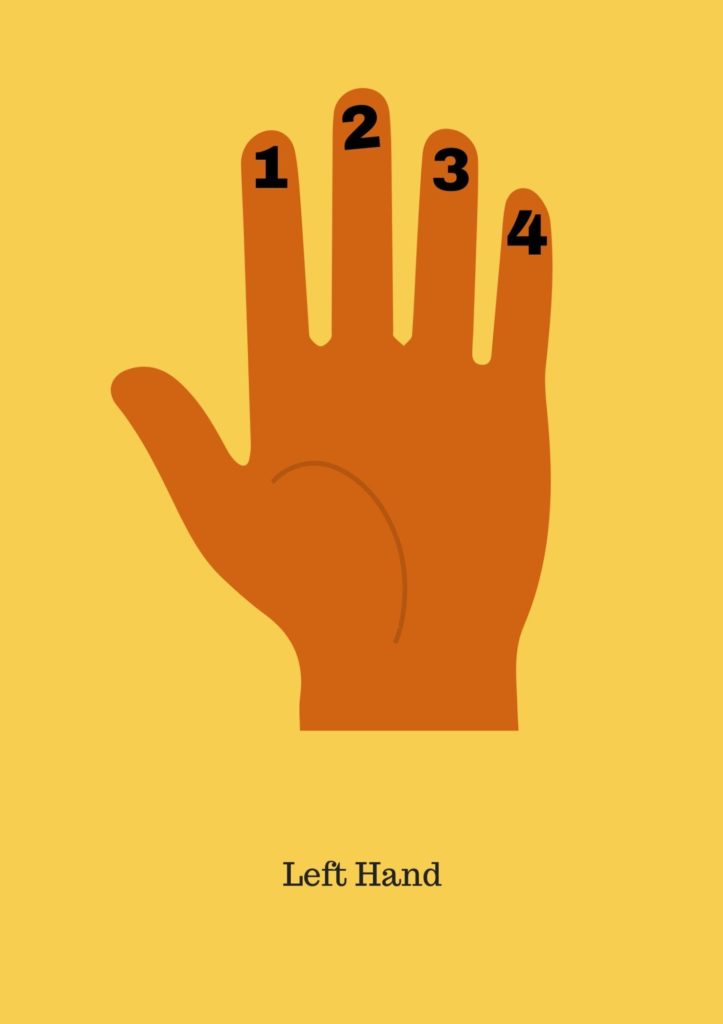
Chords
In this lesson, we encounter our first minor chord; Em7. Whenever you see a lowercase letter m after a chord, it signifies a minor chord. The 7 just tells us we have an additional note, in this case a D.
Take a listen to the Em7 chord….
This is what it looks like…




Theory – Major & Minor Chords
A chord is several notes played simultaneously. Typically, there are three or more notes.
Major chords are happy sounding. There are three basic notes; a first, third & fifth note. These three notes are referred to as a triad.
Minor chords are sad sounding. We also have a first, third & fifth note, but the third note is a minor third, meaning that it is one semitone lower.
Some chords have additional notes Cadd9 and Em7 are examples this.
Guitar Strings
As a beginner, the most important point is that the strings are reasonable quality and stay in tune. Equally important is that you don’t choose heavy strings which can make it harder to play.
The Elixir Nanoweb strings are a good investment. They are twice the price but keep their tone 3-5 times longer due to the coating. Very similar strings are the D’Addario Extended Play EXP13, also coated for extra life.
How to fit Acoustic Guitar Strings
Time signature
A time signature is a way of describing how many beats there are in a bar/measure. A time signature is written as a fraction and the most common is 4/4. The first number (4) tells us how many beats to count. The second tells us the duration of the beat, in this case, it’s a quarter note.
4/4 1 2 3 4 1 2 3 4 Hot Po - ta - to Hot Po - ta - to
If you repeat the phrase hot potato, the sylables have a 4/4 feel!
Right-hand technique
Downstokes & Upstrokes

